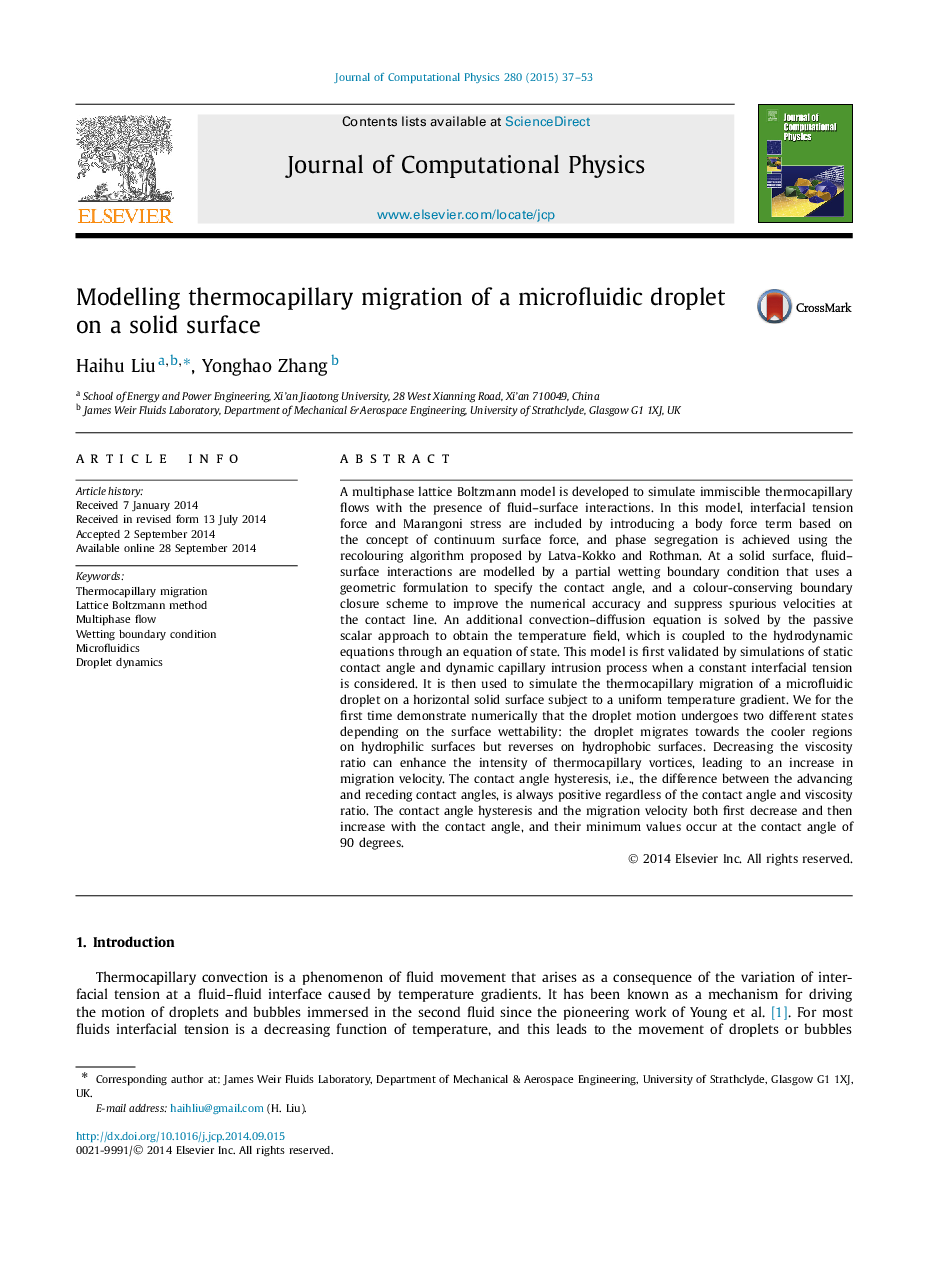| کد مقاله | کد نشریه | سال انتشار | مقاله انگلیسی | نسخه تمام متن |
|---|---|---|---|---|
| 6932149 | 867636 | 2015 | 17 صفحه PDF | دانلود رایگان |
عنوان انگلیسی مقاله ISI
Modelling thermocapillary migration of a microfluidic droplet on a solid surface
ترجمه فارسی عنوان
مدلسازی مهاجرت ترموکاپیلی یک قطره میکروفیلیید روی یک سطح جامد
دانلود مقاله + سفارش ترجمه
دانلود مقاله ISI انگلیسی
رایگان برای ایرانیان
کلمات کلیدی
موضوعات مرتبط
مهندسی و علوم پایه
مهندسی کامپیوتر
نرم افزارهای علوم کامپیوتر
چکیده انگلیسی
A multiphase lattice Boltzmann model is developed to simulate immiscible thermocapillary flows with the presence of fluid-surface interactions. In this model, interfacial tension force and Marangoni stress are included by introducing a body force term based on the concept of continuum surface force, and phase segregation is achieved using the recolouring algorithm proposed by Latva-Kokko and Rothman. At a solid surface, fluid-surface interactions are modelled by a partial wetting boundary condition that uses a geometric formulation to specify the contact angle, and a colour-conserving boundary closure scheme to improve the numerical accuracy and suppress spurious velocities at the contact line. An additional convection-diffusion equation is solved by the passive scalar approach to obtain the temperature field, which is coupled to the hydrodynamic equations through an equation of state. This model is first validated by simulations of static contact angle and dynamic capillary intrusion process when a constant interfacial tension is considered. It is then used to simulate the thermocapillary migration of a microfluidic droplet on a horizontal solid surface subject to a uniform temperature gradient. We for the first time demonstrate numerically that the droplet motion undergoes two different states depending on the surface wettability: the droplet migrates towards the cooler regions on hydrophilic surfaces but reverses on hydrophobic surfaces. Decreasing the viscosity ratio can enhance the intensity of thermocapillary vortices, leading to an increase in migration velocity. The contact angle hysteresis, i.e., the difference between the advancing and receding contact angles, is always positive regardless of the contact angle and viscosity ratio. The contact angle hysteresis and the migration velocity both first decrease and then increase with the contact angle, and their minimum values occur at the contact angle of 90 degrees.
ناشر
Database: Elsevier - ScienceDirect (ساینس دایرکت)
Journal: Journal of Computational Physics - Volume 280, 1 January 2015, Pages 37-53
Journal: Journal of Computational Physics - Volume 280, 1 January 2015, Pages 37-53
نویسندگان
Haihu Liu, Yonghao Zhang,
